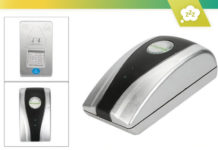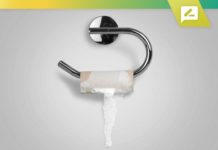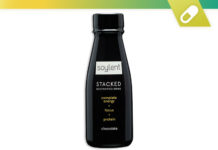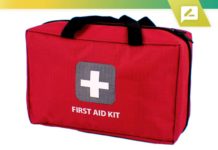Panic attacks are intense episodes of sudden fear and anxiety that can be overwhelming and debilitating. These attacks often manifest with physical and emotional symptoms such as a racing heart, sweating, trembling, chest pain, nausea, and a feeling of impending doom. Despite their alarming nature, panic attacks are pretty common and manageable with the right strategies and interventions. This comprehensive article delves into the causes, symptoms, and effective methods for managing and preventing panic attacks, providing a well-rounded understanding of this condition.
Panic attacks may last from 5 to 20 minutes and can occur unexpectedly in response to stress or without any obvious trigger. They are a hallmark symptom of panic disorder but can also occur with other mental health conditions such as generalized anxiety disorder, phobias, or mood disorders. Understanding this condition is the first step toward managing it effectively.
Understanding the Causes and Symptoms
Panic attacks can occur for various reasons. They often involve a combination of genetic, environmental, and psychological factors. While the exact cause is still unknown, research suggests that certain parts of the brain and biological processes play crucial roles in fear and anxiety responses. Panic disorder, for instance, often runs in families, hinting at a genetic predisposition. Additionally, significant life changes, high stress levels, or trauma can trigger panic attacks.
The symptoms of a panic attack are multi-faceted and can vary from person to person. Common physical symptoms include a pounding or racing heart, sweating, chills, trembling, difficulty breathing, dizziness, and chest pain. Emotionally, individuals may experience intense fear, a sense of unreality or detachment, and a fear of losing control or dying. These symptoms can be terrifying, leading many to believe they are experiencing a heart attack or other life-threatening condition.
Immediate Strategies for Managing Panic Attacks
When a panic attack strikes, having a set of immediate coping strategies can help manage the intensity and duration of the episode. Here are several techniques that can provide relief:
- Deep Breathing: One of the most effective ways to reduce the severity of a panic attack is to practice deep breathing. Panic attacks often cause rapid, shallow breathing, which can exacerbate symptoms. Focusing on slow, deep breaths helps calm the nervous system and brings the body back to equilibrium.
- Grounding Techniques: Grounding techniques can help divert your attention from the panic attack symptoms and focus your mind on the present moment. These methods include focusing on physical sensations, such as feeling the ground under your feet, holding a comforting object, or describing your surroundings in detail.
- Positive Coping Statements: Repeating positive coping statements can help reframe your thoughts during a panic attack. Phrases like “This will pass,” “I am safe,” and “I can handle this” can reduce fear and anxiety, providing reassurance and comfort.
- Physical Activity: Engaging in light physical activity, such as walking, can help release built-up tension and distract the mind from the panic attack. Exercise promotes the release of endorphins, which can improve mood and reduce anxiety.
- Mindfulness and Meditation: Practicing mindfulness and meditation can be particularly helpful in managing panic attacks. These techniques encourage focusing on the present moment and accepting thoughts and feelings without judgment. Apps like Calm and various guided meditations on YouTube provide accessible resources for mindfulness practices.
Long-Term Strategies for Preventing Panic Attacks
In addition to immediate coping strategies, adopting long-term habits can reduce the frequency and severity of panic attacks. Here are some effective approaches:
- Sticking to a Treatment Plan: Consistency is key in managing panic attacks. Working with a healthcare provider to develop and adhere to a personalized treatment plan can make a significant difference. This plan may include medication, therapy, or a combination of both.
- Therapy and Counseling: Cognitive Behavioral Therapy (CBT) is often recommended for treating panic disorder. CBT identifies and challenges negative thought patterns and behaviors, replacing them with healthier responses. Therapy provides a safe space to explore the underlying causes of panic attacks and develop effective coping mechanisms.
- Support Groups: Joining a support group can connect you with others experiencing similar challenges. Sharing experiences and learning from others can provide emotional support and practical advice. Organizations such as No Panic offer resources and support for individuals struggling with panic attacks and anxiety-related issues.
- Healthy Lifestyle Choices: Lifestyle changes can significantly impact stress and anxiety levels. Regular physical activity, a balanced diet, and adequate sleep are fundamental to overall well-being and can reduce the likelihood of panic attacks. Avoiding caffeine, alcohol, smoking, and recreational drugs is also crucial, as these substances can trigger or worsen panic attacks.
- Stress Management Techniques: Practicing stress management techniques, such as yoga, progressive muscle relaxation, and breathing exercises, can help mitigate anxiety and prevent panic attacks. These methods promote relaxation and can be incorporated into daily routines.
Helping Others and Seeking Professional Assistance
Supporting someone with panic disorder can be challenging but immensely rewarding. If you suspect a friend or family member is dealing with panic attacks, set aside time to talk with them. Express your concern and reassure them of your support. Offer to help them seek professional assistance if their anxiety is affecting their daily life. Encouraging them to connect with a healthcare provider can lead to developing an effective treatment plan.
Professional help is essential when panic attacks become frequent and disruptive. Healthcare providers can offer various treatment options, including medication, therapy, or both. Medications such as selective serotonin reuptake inhibitors (SSRIs) and benzodiazepines are commonly prescribed to manage panic disorder. These medications can help reduce the frequency and intensity of panic attacks, making it easier for individuals to go about their daily lives.
Research and Clinical Trials
Ongoing research on panic disorder aims to improve understanding and treatment of the condition. Clinical trials are an essential part of this research, helping to develop new prevention, detection, and treatment strategies. Participating in clinical trials can allow individuals to access cutting-edge treatments while contributing to scientific knowledge.
The National Institute of Mental Health (NIMH) supports a wide range of research, including clinical trials, to understand panic disorder better and develop effective treatments. Their work focuses on exploring the biological, psychological, and social factors that contribute to panic disorder, paving the way for innovative interventions.
Encouraging an Optimistic Outlook
Living with panic disorder can be challenging, but it is possible to lead a fulfilling and productive life with the right strategies and support. Adopting an optimistic outlook is crucial. Understanding that panic attacks are manageable and that effective treatments are available can foster a sense of hope and confidence.
Individuals can regain control over their lives by implementing immediate coping strategies, adopting long-term preventive measures, and seeking professional help when needed. The journey towards managing panic attacks is unique for each person, but with persistence and support, it is possible to achieve significant improvements in quality of life.
Resources and Support
Numerous resources are available to support individuals dealing with panic attacks. Websites like YoungMinds offer practical tips and personal experiences from those who have successfully managed their condition. Additionally, support organizations like The Mix provide young people with valuable information and counseling services.
The Mayo Clinic also offers comprehensive information on panic attacks, including treatment options and lifestyle recommendations. Their resources can help individuals understand their condition better and find appropriate ways to manage it.
Conclusion
Panic attacks are a challenging but manageable condition. Understanding the causes, recognizing the symptoms, and implementing effective strategies can significantly reduce the impact of panic attacks on daily life. Immediate coping techniques, long-term preventive measures, and professional assistance are crucial components of a comprehensive approach to managing panic attacks.
By fostering an optimistic and proactive mindset, individuals can learn to navigate their condition confidently and resiliently. With the right tools and support, it is possible to lead a fulfilling life free from the paralyzing grip of panic attacks. Emphasizing self-care, seeking help when needed, and staying informed about the latest research and treatment options are essential steps toward achieving lasting relief and improved mental health.













![Bowflex Max Total: 2024 Fitness Workout Exercise Machine [Review] Bowflex Max Total: 2020 Equipment Review For Complete Upper and Lower Body Workout](https://www.advancedliving.com/wp-content/uploads/2019/12/Bowflex-Max-Total-218x150.jpg)


